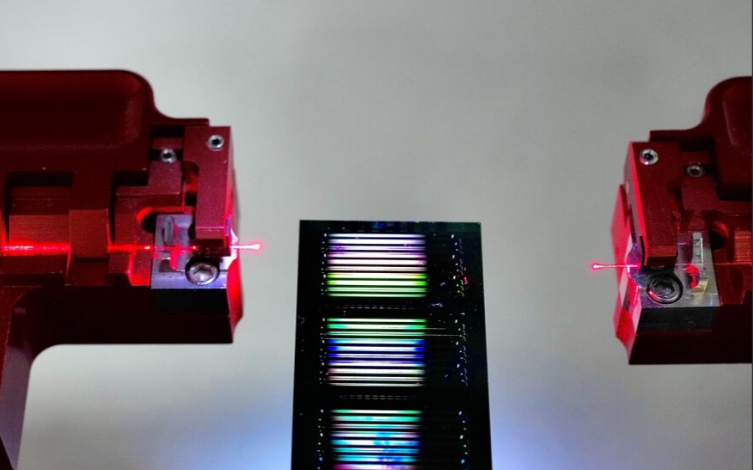Insider Brief
- A U.K.-funded project within the £22 million Integrated Quantum Networks Hub has produced a prototype network that links two quantum subnetworks into a single, reconfigurable eight-user system, according to Heriot-Watt University.
- The demonstration, reported in Nature Photonics, shows the combined network can route entanglement in multiple configurations and perform multiplexed entanglement teleportation across two channels, using a low-cost commercial optical fiber as a programmable optical circuit.
- Heriot-Watt researchers say the architecture could support multi-user quantum communications and future distributed quantum computing systems, though real-world deployment will require advances in stability, scaling, and long-distance performance.
A U.K.-funded quantum research program has produced a prototype network that links two smaller quantum networks into a single reconfigurable, eight-user system, according to Hariot-Watt University.
The demonstration is detailed in Nature Photonics and is touted as one of the most flexible quantum networking experiments to date. The project sits within the UK’s Integrated Quantum Networks Hub, a national effort to develop the country’s first large-scale quantum network and support the government’s goal of deploying a world-leading system by 2035.
“Other teams had already demonstrated that you can build a single quantum network and send entanglement to many users at once,” Professor Mehul Malik from Heriot-Watt’s School of Engineering and Physical Sciences said. “But this is the first time anyone has managed to link two separate networks together. It doesn’t just distribute entanglement in different ways, it actually links one network to the other.

The study connects two independent quantum subnetworks and researchers said it shows they can operate as one system capable of routing entanglement in multiple configurations. According to the researchers, the prototype distributes entanglement locally within each network or globally across both, depending on how the system is programmed. The university reports that the architecture can be reconfigured on demand, allowing different users to receive different types of entanglement simultaneously.
According to the university, the team also demonstrated multiplexed entanglement teleportation, a process in which entanglement is transferred between users across different channels. The Heriot-Watt system extends this capability to four distant users operating over two channels. The researchers attribute this to a multiplexing approach borrowed from classical telecommunications, where several signals are carried through a single optical fiber using different wavelengths.
“By shaping the light at the input, we effectively programmed the fiber, transforming its messy internal scattering into a powerful, high-dimensional optical circuit,” said Dr Natalia Herrera Valencia. “That lets us route quantum entanglement wherever we want, even teleport it, using this deceptively simple piece of fibre.”
A distinguishing feature of the prototype is its use of a low-cost, commercially available optical fiber. Instead of engineering a custom quantum device, the researchers treated the fiber’s internal scattering properties as a resource. By shaping incoming light, the team programmed the fiber to act as a high-dimensional optical circuit capable of sending entanglement to multiple destinations. The study describes this reconfigurability as essential for supporting many simultaneous users.
The researchers argue that this architecture could influence several areas of quantum technology. For quantum communications, the demonstration shows that multi-user networks may not require specialized hardware, potentially reducing deployment costs. For quantum computing, the ability to route entanglement among many nodes could serve as a method for linking small quantum processors into larger, distributed systems. The university noted that this approach aligns with efforts to scale quantum computing by connecting multiple devices rather than enlarging individual processors.
The paper acknowledged limitations. The experiment took place in controlled laboratory conditions, and real-world networks would need to withstand environmental noise, temperature shifts, and long-distance signal degradation. Maintaining precise calibration across extended networks remains an unresolved challenge. The study also notes that scaling beyond eight users will require improved multiplexing tools and more robust optical components.
“Yes, this is a lab-scale demonstration, but the principle is extendable,” Malik noted.
The research was conducted within Heriot-Watt University’s Beyond Binary Quantum Information Lab in collaboration with the Edinburgh Mostly Quantum Lab. Funding came from the UKRI Engineering and Physical Sciences Research Council, the European Research Council, and the Royal Academy of Engineering.
Image credit: Heriot-Watt University
















